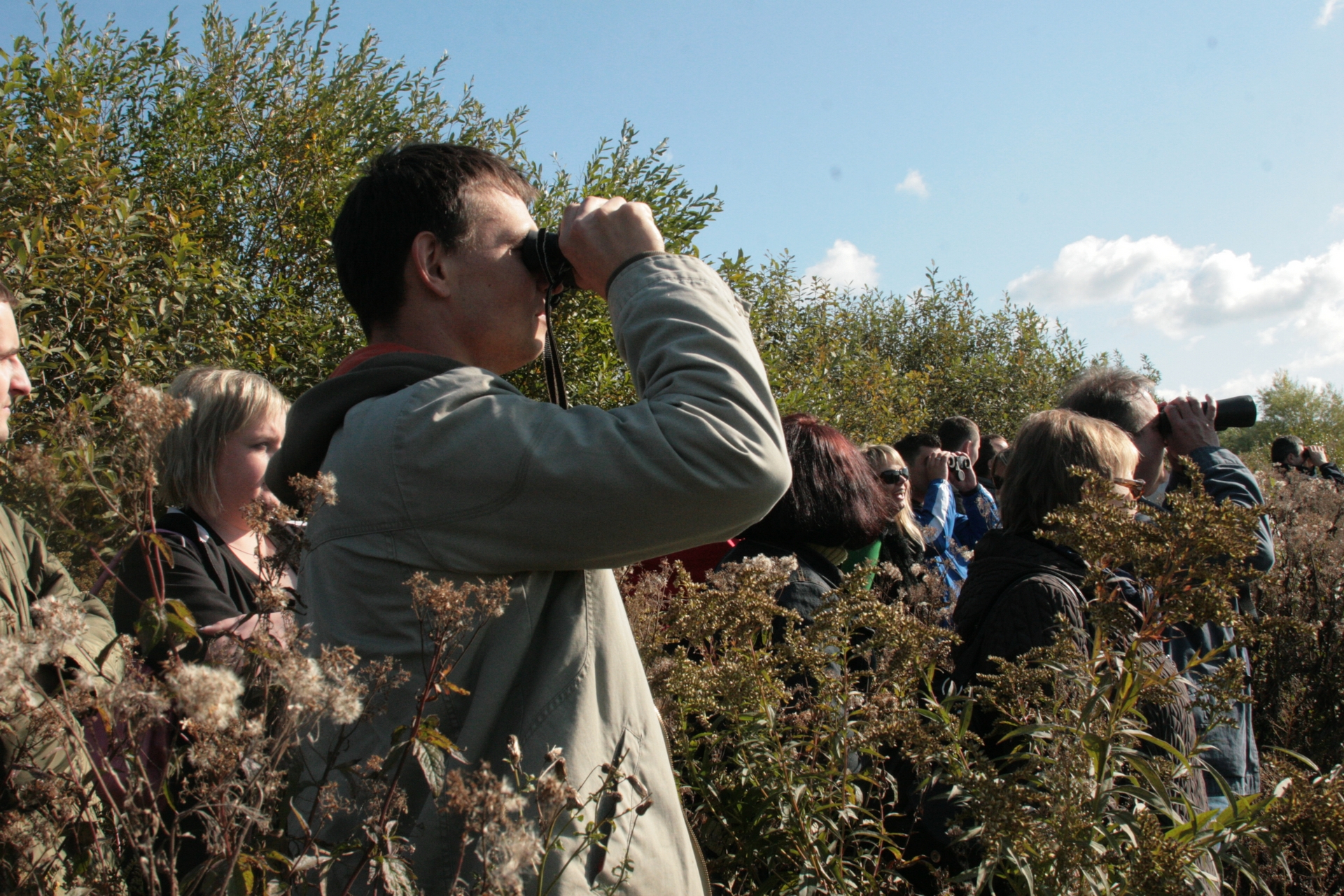Visiting offer for groups

A standard tour of the Poleski National Park includes the following elements:
- watching a film about the Poleski National Park,
- visiting the Pond Turtle Protection Centre,
- visiting the Educational – Museum Centre,
- visiting nature paths,
- campfires (for volunteers) at the end.
Groups of more than 10 people can visit the Poleski National Park with an authorised guide.
A film about the Poleski National Park
The Park offers two films presenting the natural assets of the Park. The films can be chosen depending on the time that the groups or visitors have. The first, a shorter 29-minute film, shows the natural assets of the Park by presenting them through the angle of the four seasons. It presents a number of in-teresting species of plants and animals against a background of landscapes and habitats of the Park starting from spring. This is the season that is richest in species in the Park. The film presents nature in particular seasons, ending in spring again and thus symbolising the cyclical nature of the phenomena in nature. The second, a longer 45-minute film, shows the nature of the Poleski National Park in terms of its ecosystem. The first discussed ecosystems are the water ecosystems because it is water that determines the diversity and sustainability of the nature of the Park. Further, the film presents bog eco-systems, their flora and fauna, as well as forest communities. At the end of the film there is a presenta-tion of the elements of material culture associated with the area of the Park.
Pond Turtle Protection Centre of Poleski National Park
In the management office of Poleski National Park where, among others, films are shown, there is Pond Turtle Protection Centre. In the period from mid-September to the end of May there are little pond turtles in the Centre. It is one of the activities the Park Service aimed at improving the state of pond turtles. There are many reasons why small pond turtles are kept in the Centre. One of them is that it is difficult to access water reservoirs near their lairs in which, during early autumn, there is no water. Young turtles residing in the Centre during the winter time are given food and they grow (they are 2-3 times bigger than in the autumn). They are released in spring into water near their lairs. Such actions increase their chances of survival in the environment.
Educational - Museum Centre of Poleski National Park
Another attraction in our offer is a visit of the Educational - Museum Centre of the Poleski National Park in Załucze Stare. There is a small museum and a short nature path ‘Żółwik’. The museum exhibition is located in a small one-story building and the adjoining covered area for museum exibit pieces. The museum exhibition consists of the following departments: geographical, historical, ethnographic, an aquarium, and nature department. In terrariums there are living amphibians and reptiles. In the cov-ered area for museum exibit pieces there are large museum exhibits of the material culture of the region. There are farming tools, bays for storing grain, craft workshops and farm cars and light carriages from the workshops that were once open in Załucze Stare. The last attraction of the Educational – Museum Centre is the nature path ‘Żółwik’ located behind the museum building. The trail presents information about pond turtles and the construction of forest and its inhabitants. On the path there is a waterhole with a fragment of a peat mat with characteristic peat bog. An adult turtle can sometimes be spotted in the waterhole. By the path there is also an aviary for birds and a run for mammals, which are used for temporary keeping and rehabilitation of sick and wounded animals. The trail has been developed for the youngest visitors to our Park.
Visiting nature paths
The final element of our offer is the possibility of walking on one of the three nature paths of our Park, which, among others, includes ‘Dąb Dominik’ and ‘Spławy’, presenting mainly peat bog ecosystems of the Park, as well as the ‘Perehod’ path of an ornithological nature. The paths have their own educational and tourist infrastructure in the form of educational panels describing particular stops on the paths and information about covered areas, rubbish bins, footbridges over peat bogs, piers and observation towers. The paths are from 3.5 km to 5 km long and it takes about 2h to visit them with a guide. If you like cycling, you can choose the "Mietiułka" trail, which is 21 km long and goes through forests, meadows, along the Mietiułka River and close to "Durne Bagno" peat bog.
Campfires
At the end of the visit in the park you can light campfires in designated places, summarize the visit, and then roast sausages and eat them. The park does not provide food for campfires. However, fire-wood and sticks for roasting sausages are provided.